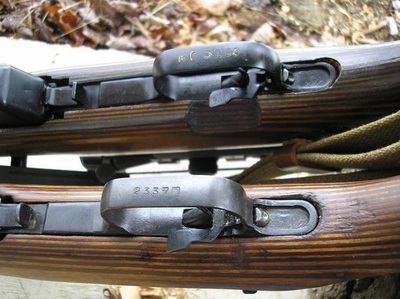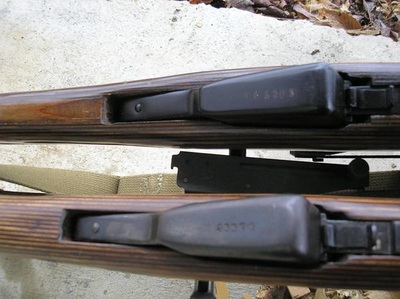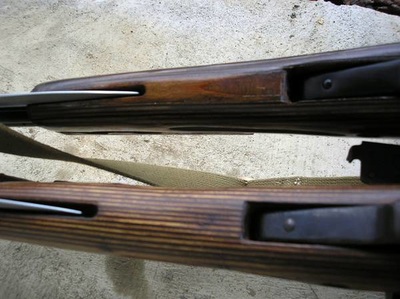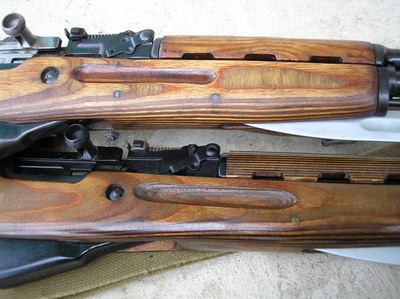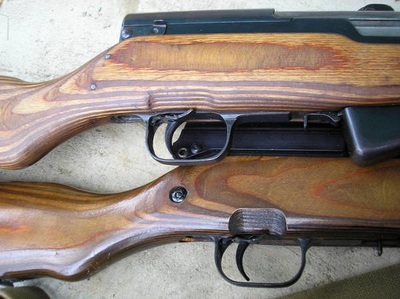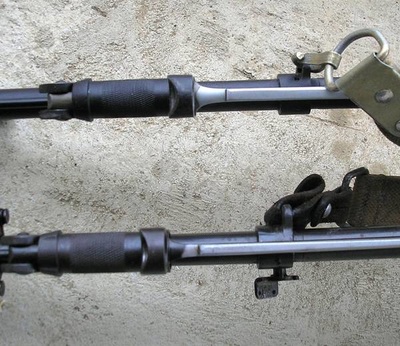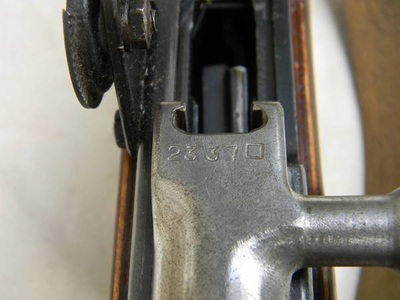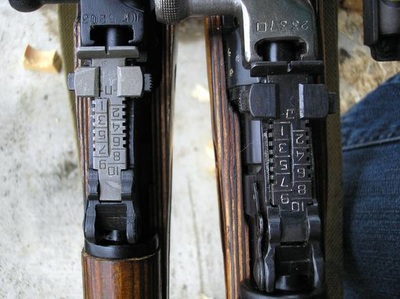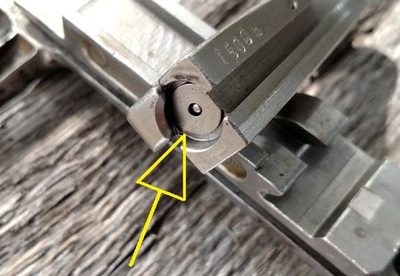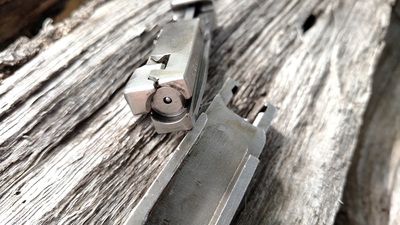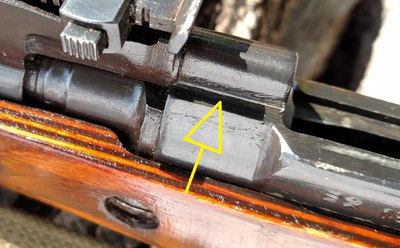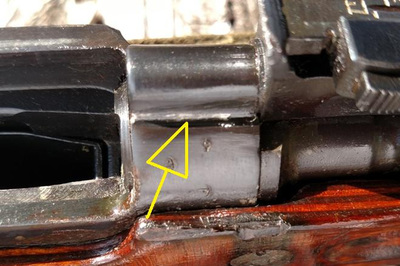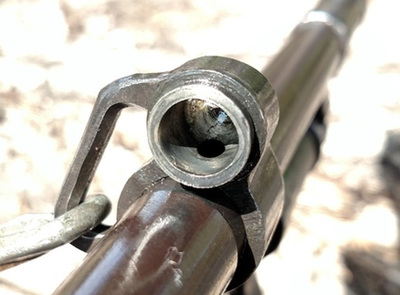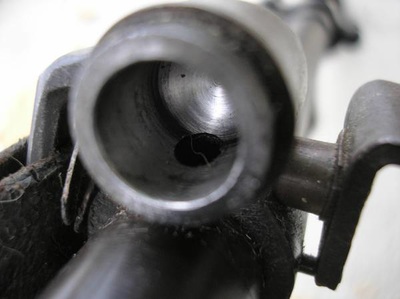Design Comparisons
As the Type-63 was introduced in 1963, it most closely resembles the Chinese Type-56 carbine that was in simultaneous production at the Jianshe Arsenal, Factory /26\. However both the North Korean and the Chinese were based on the Russian SKS-45. On this page we will illustrate the most noticeable differences compared to other nations.
Stocks
|
The similarities and differences of the laminated stock are most interesting. Both the North Korean and the Russian stocks appear to be constructed of cross-grained birch and have an identical number of layers, at 47.
The underside of the forestock from the trigger guard to the bayonet groove is filled with a wide horizontal laminate plug on the Russian, and is left unplugged as vertical laminate on the North Korean. The North Korean does have a larger rivet head for retaining the follower spring. Light colored stock in photos is the North Korean. (bottom) |
|
The Type-63 stock has two front reinforcing pins, vs. only one on the Russian SKS-45. The finger grasping groove is shorter on the North Korean, and it has a solid hardwood handguard as apposed to the Russian which has a longer finger groove and a horizontal laminated handguard.
The Type-63 stock wrist has two reinforcing pins instead of the single Russian crossbolt. The trigger finger relief cut is also much longer and more shallow on the North Korean. Light colored stock in photos is the North Korean. (top) |
Bayonets
Bolt Carrier
Bolt
Receiver
Gas Block

